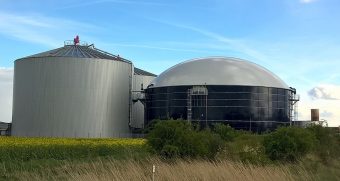
Bioenergy – solid biofuels, biogas, biomethane and liquid biofuels – already makes a significant contribution to the world’s energy supply, but half of the deployment currently takes the form of traditional uses of bioenergy for cooking and heating, mainly in developing countries. The situation needs to change. Inefficient applications of biomass must be replaced by modern and clean energy solutions, since they harm people’s health, damage the environment and reduce social well-being.
Modern forms of bioenergy are increasingly being used to generate electricity, for heat in buildings and industry, for transport fuels and as an industrial feedstock. For example, biomass-based aviation fuel is the most promising renewable option in the near and medium term.
However, increasing bioenergy deployment and realising its wider socio-economic benefits presents its own difficulties. Five major challenges across all end-uses that urgently need to be addressed:
Policy uncertainty and complex institutional structures are major barriers to most renewables, including bioenergy. Currently, bioenergy development is not receiving enough policy attention. Bioenergy policy making usually involves various government departments and cross-sectoral actors. Governments should set a long-term bioenergy strategy, with clearly defined targets and cross-sectoral co-ordination, to build confidence for investors and project developers. Mandates for bioenergy consumption and a ban on fossil fuel use can also be used to increase market demand.
Financial and economic barriers include fossil fuel subsidies, high costs and lack of access to affordable finance. Without measures accounting for the negative impacts of fossil fuel burning, most bioenergy options have a higher cost than fossil fuels. Financial and fiscal support measures can ensure that the production and use of bioenergy are profitable for enterprises and affordable for final consumers. Measures include the phase-out of fossil fuel subsidies and the introduction of carbon pricing policies to fix energy market distortion, a lower tax burden or grants and subsidies to raise its competitiveness, and measures to facilitate affordable financing.
A low level of technology readiness remains another major barrier to novel bioenergy technologies, such as biomass-based aviation fuels and biomass for high-temperature industrial processes. A lack of infrastructure adds to the challenge, such as the need for onsite biomass storage and the ability of natural gas grids to accommodate biomethane. Policy support for innovation through research, development and demonstration can raise technology readiness and accelerate commercialisation.
Weak supply chains are one of the most dominant barriers. These include unstable feedstock supply, lack of qualified workers and sustainability risks. Regulations on quality control and standardisation can improve product quality and operational efficiency. Training, education and capacity building can improve workers’ skills in the design, installation, operation and maintenance of bioenergy systems. Most importantly, a context-based sustainability policy framework, containing appropriate measures, is urgently needed to ensure sustainable good practices.
A lack of awareness of bioenergy products and their benefits can also affect the engagement of stakeholders. Public campaigns and information-sharing activities raise public and business awareness. Accessible information on the availability and location of bioenergy resources (e.g. agricultural and forestry residues, organic waste) and infrastructure can also help project developers identify bioenergy feedstocks and the best project locations.
More:
Increasing the deployment of bioenergy is an essential component of an energy transition that aligns with the 1.5°C Scenario. Bioenergy needs to make a greater contribution towards meeting the demand for energy in all end uses in the coming decades. While all stakeholders have a role to play here, policy makers have a particular opportunity to effect this change: the right mix of policies can increase the supply and use of bioenergy, improve its sustainability and minimise any negative impacts.
Source: IRENA





